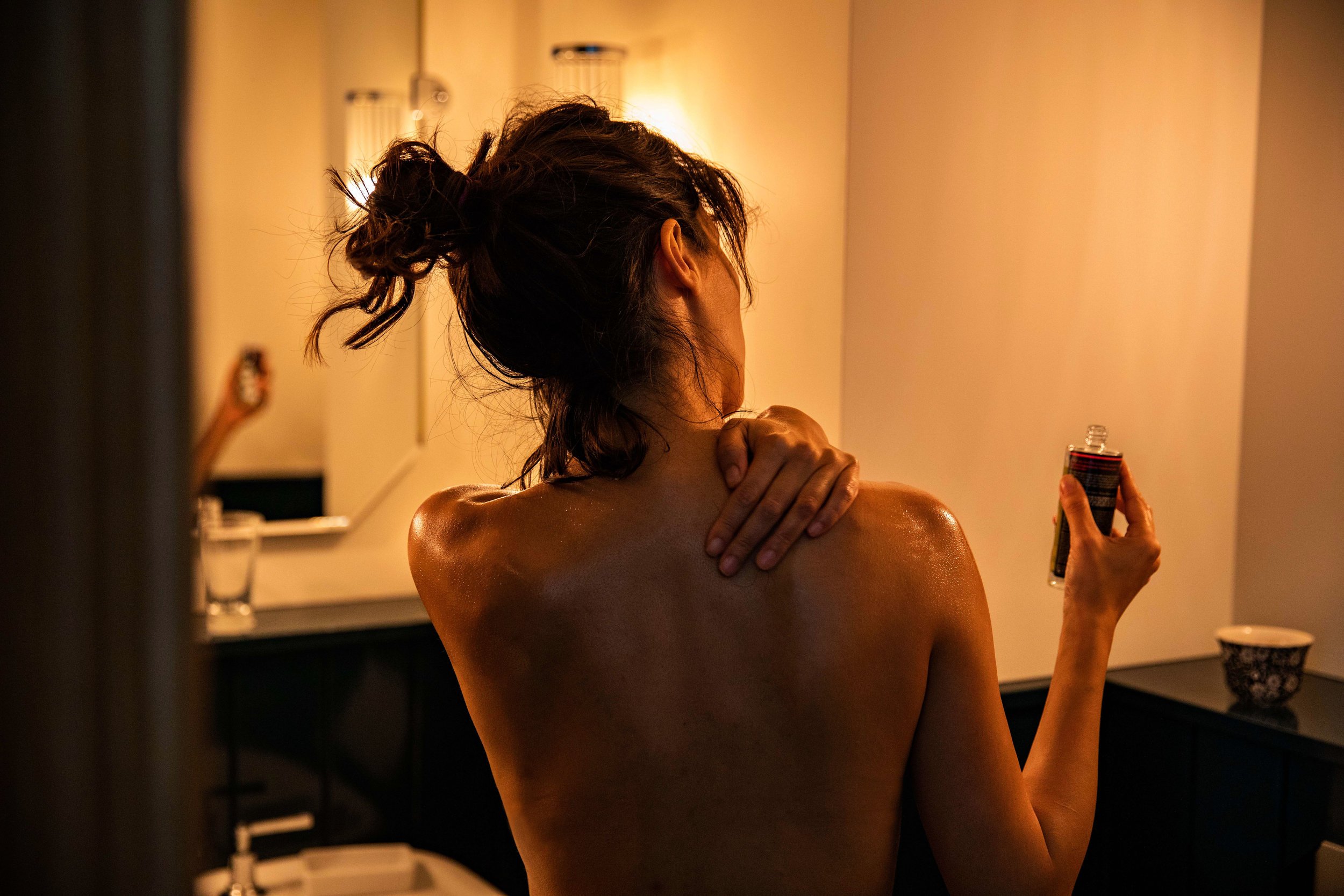Soak in the Love: Abhyanga, Ayurveda’s Most Nourishing Ritual
Because your body deserves a hug, every single day.
Let’s be honest—when was the last time you showed your body some real, loving attention? Not a rushed shower or a quick lotion slather, but true, intentional care?
Enter: Abhyanga, the ancient Ayurvedic practice of self-massage with warm oil. It’s like pressing the pause button on your stress, anxiety, and tension—and wrapping yourself up in your own nurturing energy.
What is Abhyanga?
Abhyanga (ah-bee-yan-ga) is an Ayurvedic daily ritual that involves massaging the body with warm, herb-infused oil. Traditionally done in the morning before bathing, it’s used to nourish the skin, calm the nervous system, balance the doshas (especially Vata), and promote overall longevity.
In Ayurveda, your skin is seen as a living organ—deeply connected to your nervous system and your inner world. By touching it with warm oil and intention, you’re sending the message: You are safe. You are loved. You are whole.
Benefits of Abhyanga
This practice is so much more than just skin-deep. Regular Abhyanga can:
Calm the nervous system and reduce stress
Balance Vata dosha, especially in fall and winter
Improve sleep quality and mental clarity
Boost circulation and lymphatic drainage
Nourish and soften the skin
Strengthen muscles and joints
Ignite digestive fire by stimulating internal organs
Support emotional grounding and self-love
When to Practice Abhyanga
Traditionally, Abhyanga is practiced in the morning before bathing, to awaken the body and prepare you for the day ahead. But if mornings are hectic, it’s totally okay to do it before bed—especially if you need help winding down.
Pro tip: Even 5-10 minutes of Abhyanga a few times a week can do wonders.
What You’ll Need
A small bottle of organic oil (see dosha guide below)
A glass or metal bowl to warm the oil
An old towel or bathmat to sit on
10-15 quiet minutes (yes, you’re worth them!)
Optional: a candle or calming music to set the vibe
Choosing your oil:
Vata (dry, cold, anxious): Sesame oil or Ashwagandha Bala oil
Pitta (hot, fiery, irritable): Coconut oil or Brahmi oil
Kapha (heavy, sluggish): Sunflower or mustard oil
Tridoshic or unsure? Sesame oil is a good all-around choice.
Warm your oil gently by placing the container in a bowl of hot water for a few minutes.
Step-by-Step Abhyanga Guide
Set the mood: Find a warm, quiet space. Take a few deep breaths.
Warm the oil: Gently warm the oil and pour a little into your palm.
Start at the crown: Massage your scalp with small, circular strokes. Don't skip this—your scalp holds a lot of tension.
Move to the face and ears: Use gentle, upward strokes. (Bonus: it’s like natural Botox.)
Neck & shoulders: Use firm strokes, especially where you carry stress.
Arms: Long strokes on the limbs, circular motions on the joints.
Chest & abdomen: Clockwise circles over the belly (follow digestion!), gentle strokes over the heart.
Back & spine: As much as you can reach—this area loves attention.
Legs & feet: Finish with long strokes down the legs and circles around the knees and ankles. Spend time on your feet—they carry you every day.
Let the oil soak in for 10–20 minutes if possible, then shower or bathe using gentle, non-drying soap (or skip soap entirely if you're just rinsing).
The Ritual Is the Medicine
Abhyanga is more than just a massage—it’s a practice of radical self-love. It reminds you to slow down, reconnect, and care for your body with reverence.
Even on the busiest days, taking a few moments to touch your own skin with kindness can shift your entire energy. In Ayurveda, touch is medicine, and Abhyanga is one of the most healing gifts you can offer yourself.
Have you tried Abhyanga yet? If not, I challenge you to give it a go this week. Start small—maybe just the feet before bed—and see how your body responds. I’d love to hear your experience, or help you choose the right oil for your dosha!
Stay soft, stay sacred.


